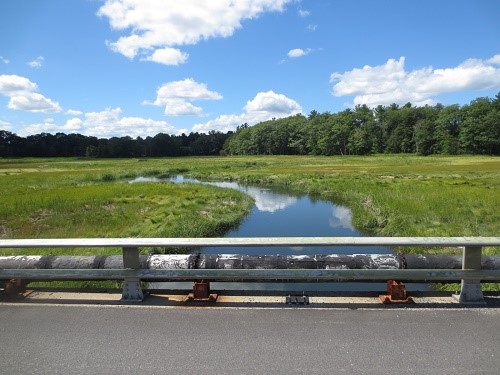New Hampshire Towns Benefit from Tidal Crossing Flood Reduction Project
The Takeaway: A $2.9 million project will replace three small tidal culverts with larger, upgraded structures to reduce flood risk and provide other benefits.

The New Hampshire Resilient Tidal Crossings project received $2.9 million to upgrade priority tidal culverts on state roads in the towns of Rye and Stratham, New Hampshire. The NOAA grant was funded through the federal Bipartisan Infrastructure Law. The upgrade will improve tidal flow, which reduces flooding and erosion and positively affects the ecosystem. Construction is scheduled to begin in 2025.
This multi-year effort started in 2014 when the Nature Conservancy and the New Hampshire Department of Environmental Services worked together to create the state’s tidal crossing assessment protocol. Multiple organizations and professionals participated in nearly every step of the protocol’s development. The state used this information to assess all of New Hampshire’s tidal crossings in 2018, and determined that 80 percent of crossings were moderately to highly restrictive of tidal flows. These two lead organizations, along with other stakeholders, advanced the effort with design and engineering projects from 2020 through 2023. This funding helped move these three tidal-crossing replacement and restoration projects toward the final step: implementation.
Another helpful source of information was the state’s 2020 salt marsh planning strategy, which was funded by a NOAA Office for Coastal Management grant. These findings showed the state how to improve the way tidal wetlands are managed. The salt marsh planning strategy, combined with the tidal crossing assessment protocol, formed the basis of the funding request for the tidal culvert work.
New Hampshire has approximately 120 tidal stream crossings, all of which play a crucial role in aquatic ecosystem health. Tidal crossing infrastructure is at the front lines of coastal challenges associated with climate change, including sea level rise and more frequent and intense storm events. Climate-ready infrastructure is necessary to adapt to these challenges. Tidal culverts that are too small can block fish migration and can greatly exacerbate flooding issues. This project addresses that challenge.
Project locations were selected based on the protocol, which considered factors such as flood resilience and the condition of the structures. The goal is to replace aging infrastructure with culverts that reduce flood risk and allow for the passage of organisms and wildlife. This grant is part of the coastal zone management Habitat Protection and Restoration Awards funded through the Bipartisan Infrastructure Law. (2023)
Partners: NOAA, New Hampshire Department of Environmental Services, New Hampshire Department of Transportation, The Nature Conservancy
PRINT